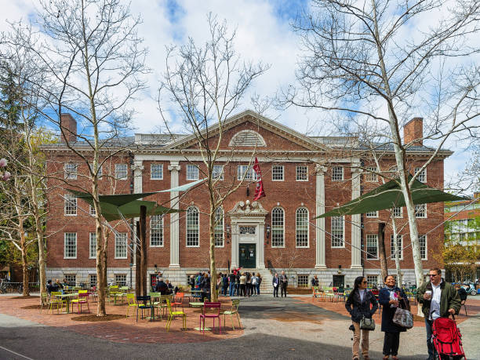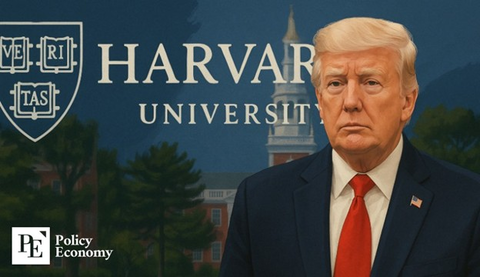Before making a final decision and sending the enrollment deposit to a university, prospective college students must take the physical environment of each school of their consideration into account. Among many factors such as student activities and academic programs, the campus of an institution is one of the most crucial elements in forming students’ college experience.
Students will be spending a significant amount of their time on and around campus for four years not only for academics and extracurricular activities but also for exploring their career options after graduation. While some dream of attending a college with a campus in a bustling metropolitan area like Manhattan, others prefer a tranquil location in a suburb like Ithaca, New York.
However, the aesthetics of buildings or the amount of greenery on campus are not the only things you should consider when visiting college campuses — which is highly recommended to do before deciding on where to attend. Here are four factors to take into consideration during a campus tour: campus size, mobility, off-campus housing, and the local community.
Campus Size
Larger student numbers do not necessarily translate into greater diversity on campus. However, larger school size does provide physical space to host a greater number of students, leaving leeway for an institution to move towards diversity.
The associate dean of students at
Naropa University in Colorado, Jeremy Moore, says prospective students should take a closer look at the diversity on campus, especially if they are from the underrepresented population.
He points out that those students may feel more accepted and welcomed on a campus with more diverse representation. He says, “If a student is a student of color or a member of the LGBTQ+ community, thinking about that, identifying and meeting those personal needs, is going to be really important.”
[caption id="attachment_2080" align="alignnone" width="2560"]

The city of Hanover in New Hampshire, where Dartmouth College is located, is small in size compared to metropolitan cities, such as New York City or Los Angeles. Photo:
Kane5187 / Public Domain[/caption]
On another note, Brian Taylor, managing partner at a college admissions counseling firm Ivy Coach, advises students not to underestimate the benefits of a smaller campus town. “When you go to a school like
Duke or
Dartmouth, you come away with lifelong friendships because there's not much else to do,” he continues, “those lifelong friends, we would argue, are the biggest benefit of attending any school.”
Mobility on and Around Campus
A survey conducted by U.S. News in the 2016-2017 academic year reported that 46.8 percent of students in 214 U.S. colleges brought cars to campus. However, there is a significant disparity between the schools with a low and high percentage of individual vehicle usage. For instance, while
Georgetown University in Washington D.C. reported that there is zero percent of students with cars on campus,
Wayne State University in Detroit, a city known as the “Motor City,” has about 98 percent of students bringing cars to school.
In other words, the need and the frequency of individual vehicle usage will depend largely on the campus location. Therefore, it would be wise to check mobility options on campus before making an enrollment commitment.
Two other mobility options often utilized by students are walking and public transportation or campus shuttles provided at each school.
[caption id="attachment_2079" align="alignnone" width="800"]

Yale University in New Haven, Connecticut has a great walkability on and around campus, being praised as a "Walker's Paradise." Photo:
Yale College Undergraduate Admissions[/caption]
Yale University in New Haven, Connecticut, for example, is not located in a metropolis such as New York City or Chicago. Nevertheless, students at Yale are able to run most of their errands by walking. The school scores 98 out of 100 for walkability and is referred to as a “Walker’s Paradise” by
Walk Score, a company that tracks walkability, bike-ability, and transit scores of U.S. cities.
On the other hand,
Cornell University satiates students’ needs for easy access to nature in exchange for mobility on and around campus. Walk Score gives a score of 10 to the school for walkability and deems it a “Car-Dependent” area. Prospective students can utilize websites and tools like Walk Score to gauge the mobility options at each campus in the process of school selection.
Off-Campus Housing
As many schools guarantee on-campus housing only to first-year and possibly second-year students, many college students will need to look for an off-campus housing option during their undergraduate years.
Moore says, “In many college towns, there is limited housing available on campus.” He continues, “That means a lot of students are living off campus.”
As a result, access to affordable and decent-quality housing also plays an important role in students’ college experience. For most university towns, housing costs rise with greater proximity to campus —
the closer the living options are to the school, the scarcer and more expensive they are.
Accordingly, many students make compromises and end up living further away from campus. If they do not own a car to drive, public transportation or school shuttles can make a significant difference. The city of Boulder in Colorado, for example, has a strong public transportation system providing residing students with an affordable and convenient option to commute to school.
Prior to making an enrollment commitment, prospective students should gather information on the housing situation at each university under consideration, especially on how likely they will need to live off-campus and the difficulty of finding an affordable and livable residence. Students can reach out to the housing department at each school, talk to current students, or join relevant groups on social media platforms to gain the most current and accurate information on housing.
Local Community
[caption id="attachment_2086" align="alignnone" width="2560"]

According to
the city government of Boulder, there are 103,838 city jobs for its 108,091 residents. Photo:
Pedro Szekely / Licensed under
CC BY-SA 2.0[/caption]
The location of a university is also closely connected to activity opportunities in the local community it belongs to. Moore points out the importance of community involvement in the local area, breaking out of the “campus bubble.”
He notes, “It's really about how you get involved. One of my recommendations for students and families alike is to understand your responsibilities as a member of (the) community.”
One of the ways many students utilize to engage in their local community is through programs provided by their university, which often host volunteer events or facilitate club activities in the surrounding area.
Furthermore, local community involvement can also bring career opportunities. For example, students at Naropa University benefit from internship and job opportunities in the city of Boulder, where the school is located. Moore says that the city hosts several major companies, in which the students can develop their career paths in advance prior to graduation.
Read More: U.S. Colleges’ Quest to Solve Food Insecurity on Campus The University of Pretoria has established centers for Asian studies and American studies Photo: Sian Tiley-Nel / Licensed under CC BY-SA 4.0[/caption]
In addition, the University of Pretoria is awaiting senate approval to establish a center for Asian Studies under its humanities department. Similarly, other universities in South Africa also opened centers to study Asian and European languages to develop their understanding of other regions.
At the same time, the University of Pretoria takes a step further. While many other African universities have focused more on Asia and Europe, the school also opened ACSUS with a clear goal to alleviate Africa’s disadvantage in knowledge compared to the level of expertise the U.S. has on the continent.
The newfound center aims to become a citadel of learning by fostering international knowledge and training students. Those students, in turn, will eventually contribute their expertise not only in academia, corporates, or foreign ministries but also in Africa’s civil society and media, influencing overall domestic and foreign policies.
The University of Pretoria has established centers for Asian studies and American studies Photo: Sian Tiley-Nel / Licensed under CC BY-SA 4.0[/caption]
In addition, the University of Pretoria is awaiting senate approval to establish a center for Asian Studies under its humanities department. Similarly, other universities in South Africa also opened centers to study Asian and European languages to develop their understanding of other regions.
At the same time, the University of Pretoria takes a step further. While many other African universities have focused more on Asia and Europe, the school also opened ACSUS with a clear goal to alleviate Africa’s disadvantage in knowledge compared to the level of expertise the U.S. has on the continent.
The newfound center aims to become a citadel of learning by fostering international knowledge and training students. Those students, in turn, will eventually contribute their expertise not only in academia, corporates, or foreign ministries but also in Africa’s civil society and media, influencing overall domestic and foreign policies.
 Following the meeting with President Uhuru Kenyatta of Kenya, President Joe Biden wrote on his social media, "I'm committed to further elevating our ties with Kenya and nations across Africa as a whole." Photo: The White House / Licensed under CC BY 3.0 US[/caption]
In contrast to the long-lasted political stance of the U.S. towards Africa, which was an outcome of the Cold War imperatives and US-China rivalry, the U.S. has recently announced that it will treat African countries as equal partners. The announcement was surprising, and yet fortunate for the continent, considering that the U.S. creates the second most jobs in Africa after China.
Regarding trade and investment, the U.S. was the third-largest investor in Africa in 2017 with $50 billion, following France and the Netherlands which invested $64 billion and $63 billion, respectively.
On the other hand, the political system of the U.S. is also a good motivation for Africa to study the country. This is especially the case since, as of 2020, there are only seven countries in sub-Saharan Africa that are considered “free” with reliable democracy. Although the U.S. has recently experienced threats to its democracy from its own people and its political system carries quite a few dysfunctional aspects, the country still stands as an epitome of a working democracy.
Furthermore, it should be noted that Africa’s most underrated export — brainpower — takes a big part in the American health system. Specifically, between 2004 and 2013, the migration of African physicians to the U.S. increased by 40 percent, resulting in a grand total of 23 percent of physicians in the U.S. originating from Africa.
Following the meeting with President Uhuru Kenyatta of Kenya, President Joe Biden wrote on his social media, "I'm committed to further elevating our ties with Kenya and nations across Africa as a whole." Photo: The White House / Licensed under CC BY 3.0 US[/caption]
In contrast to the long-lasted political stance of the U.S. towards Africa, which was an outcome of the Cold War imperatives and US-China rivalry, the U.S. has recently announced that it will treat African countries as equal partners. The announcement was surprising, and yet fortunate for the continent, considering that the U.S. creates the second most jobs in Africa after China.
Regarding trade and investment, the U.S. was the third-largest investor in Africa in 2017 with $50 billion, following France and the Netherlands which invested $64 billion and $63 billion, respectively.
On the other hand, the political system of the U.S. is also a good motivation for Africa to study the country. This is especially the case since, as of 2020, there are only seven countries in sub-Saharan Africa that are considered “free” with reliable democracy. Although the U.S. has recently experienced threats to its democracy from its own people and its political system carries quite a few dysfunctional aspects, the country still stands as an epitome of a working democracy.
Furthermore, it should be noted that Africa’s most underrated export — brainpower — takes a big part in the American health system. Specifically, between 2004 and 2013, the migration of African physicians to the U.S. increased by 40 percent, resulting in a grand total of 23 percent of physicians in the U.S. originating from Africa.























 About 60 percent of students in Mexico are having trouble accessing distance learning. Meanwhile, the country's poverty level also shows a steep increase. Photo:
About 60 percent of students in Mexico are having trouble accessing distance learning. Meanwhile, the country's poverty level also shows a steep increase. Photo:  Now with much less opportunity to educate students in person, teaching professions are losing popularity in Chile. Photo:
Now with much less opportunity to educate students in person, teaching professions are losing popularity in Chile. Photo: 
 University of La Verne's alumni reported a high level of satisfaction despite the school's relatively low placement in the rankings. Source:
University of La Verne's alumni reported a high level of satisfaction despite the school's relatively low placement in the rankings. Source: 
 The city of Hanover in New Hampshire, where Dartmouth College is located, is small in size compared to metropolitan cities, such as New York City or Los Angeles. Photo:
The city of Hanover in New Hampshire, where Dartmouth College is located, is small in size compared to metropolitan cities, such as New York City or Los Angeles. Photo:  Yale University in New Haven, Connecticut has a great walkability on and around campus, being praised as a "Walker's Paradise." Photo:
Yale University in New Haven, Connecticut has a great walkability on and around campus, being praised as a "Walker's Paradise." Photo:  According to
According to  Australian National University, Acton, Canberra. Photo:
Australian National University, Acton, Canberra. Photo:  University of Melbourne, Melbourne, Victoria. Photo:
University of Melbourne, Melbourne, Victoria. Photo:  The University of Queensland, Brisbane, Queensland. Photo:
The University of Queensland, Brisbane, Queensland. Photo:  University of Western Australia, Perth, Western Australia. Photo:
University of Western Australia, Perth, Western Australia. Photo:  The University of Adelaide, Adelaide, South Australia. Photo:
The University of Adelaide, Adelaide, South Australia. Photo:  University of Tasmania, Hobart, Tasmania. Photo:
University of Tasmania, Hobart, Tasmania. Photo:  Charles Darwin University, Darwin, Northern Territory. Photo:
Charles Darwin University, Darwin, Northern Territory. Photo:  Over 30 states offer affordable or tuition-free education at community colleges. Source:
Over 30 states offer affordable or tuition-free education at community colleges. Source:  As the war lasts longer than expected, it will be increasingly difficult for Putin's regime to control information. Photo:
As the war lasts longer than expected, it will be increasingly difficult for Putin's regime to control information. Photo:  Having all three accreditations from AACSB, AMBA, and EQUIS is a reliable sign of high-quality education. Source:
Having all three accreditations from AACSB, AMBA, and EQUIS is a reliable sign of high-quality education. Source:  The institution's motto, "to know the causes of things," shows how profoundly it approaches education. Photo:
The institution's motto, "to know the causes of things," shows how profoundly it approaches education. Photo: 
 The right to possess a weapon is incorporated in the United States Constitution, and gun control
The right to possess a weapon is incorporated in the United States Constitution, and gun control